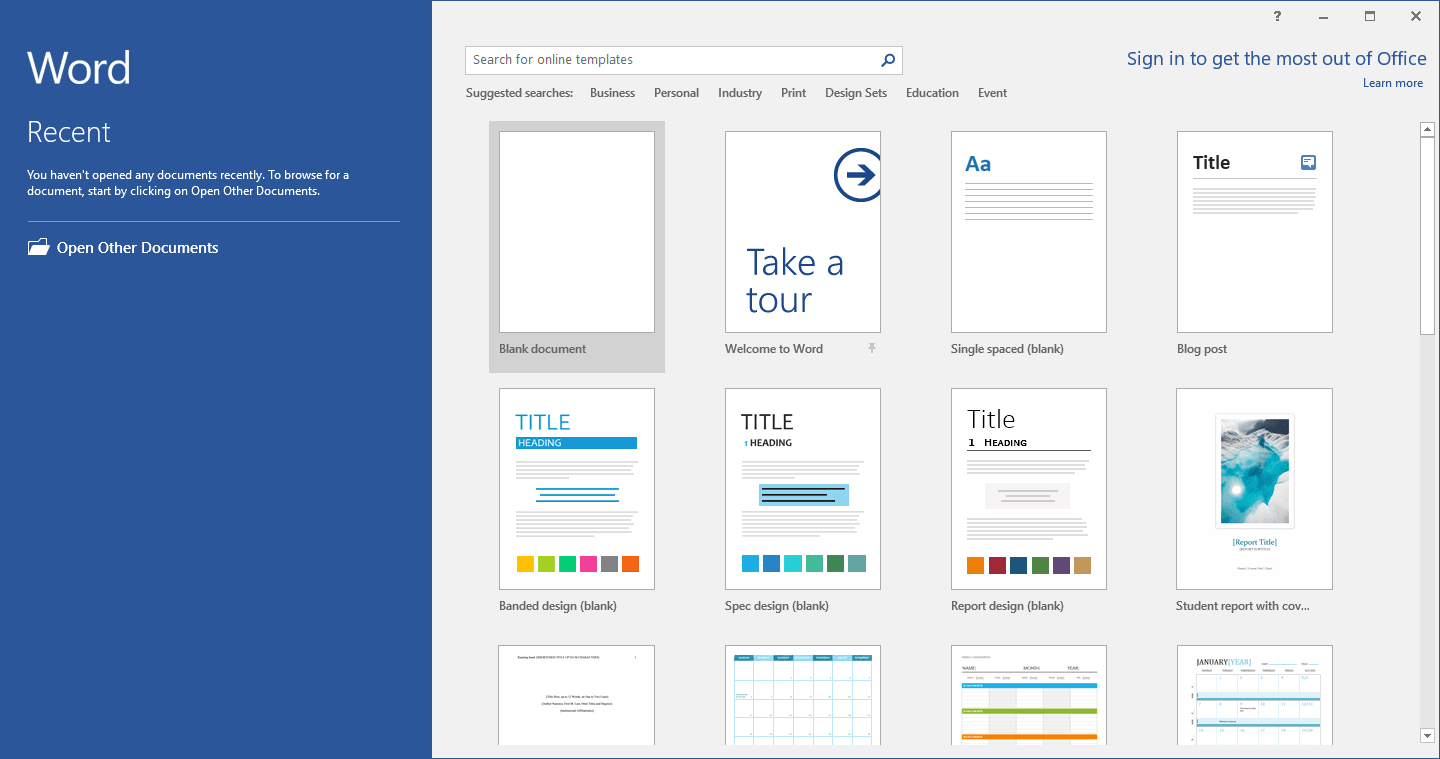 How to use and customize Microsoft Word 2016 keyboard shortcuts
How to use and customize Microsoft Word 2016 keyboard shortcuts
Microsoft Word 2016 is the latest version of the widely-used word processor in the MS Office software suite. While this application comes with a number of features that you can easily use with just a few clicks of a mouse, you can also use various keyboard shortcuts, or hotkeys, as some people like to call them, to instantly access them.
If you are curious about using and customizing these hotkeys, you can easily find it out by reading this guide.
Default keyboard shortcuts
MS Word 2016 Main Window
As you might already know, Microsoft Word 2016 (and its earlier versions) comes with multiple keyboard shortcuts set by default. Aside from the standard hotkeys such as "Ctrl + S" for saving the current document, "Ctrl + O" for opening a new file, "Ctrl + Z" for undoing your latest actions or the famous "Ctrl + C" and "Ctrl + V" for copy and paste actions, Word 2016 provides you with key combinations that specific to this application.
Here, you can view a list of some of the most frequently used keyboard shortcuts:
- Ctrl + K - Allows you to insert a hyperlink into your selected text.
- Alt + corresponding letter - Pressing the Alt key will bring up the letters you will have to press to quickly open items from the menu bar and "the ribbon" - the place right under the menu bar that provides you with a multitude of functions. For example, you can press Alt+F to bring up the "File" menu or Alt+N to show the options in the "Insert" tab.
- Ctrl + F1 - This hotkey will instantly hide the ribbon menu
- Ctrl + F - Opens a quick search box that you can use to find any desired word from your document
- Alt + Ctrl + S - Splits the document window in two or, if it is already split, reverts it back to a single page.
- Ctrl + Backspace - Deletes the word to the left of your pointer. This can be quite useful if you want to instantly delete entire words, not just letters.
- Alt + Shift + W - Underlines the selected words, but without any spaces. You can use this keyboard shortcut to quickly underline entire paragraphs without having to go back and change the style when encountering spaces between words.
- Ctrl + E - Puts the selected text in the centre of the row.
- Ctrl + Enter - Puts a page break in your document. This is useful for setting titles or headers for each page from your file.
- Ctrl + 1 and Ctrl + 2 - Quickly sets single or double line spacing between paragraphs.
Of course, there are many other keyboard shortcuts that you might find extremely useful, but I don't think that you want to scroll through multiple pages just for viewing a never-ending list of hotkeys. You can always access and view the list of available key combinations in the application itself.
Access and customize keyboard shortcuts
As I have mentioned before, MS Word 2016 allows you to access, view and even customize your own hotkeys. To do that, you will have to access the "Word Options" window by either clicking on "File" and "Options" or by simply pressing the "Alt + F + T" key combination.
Once there, navigate to the "Customize Ribbon" menu item and click on the "Customize" button right next to "Keyboard shortcuts".
Customize button
A new window will appear where you can view all of the available keyboard shortcuts (or commands) sorted by category. You can easily change or add a new hotkey for any desired function by clicking on the corresponding box and pressing the command key or key combination.
View/Change Keyboard Shortcuts
Furthermore, if you want you new keyboard shortcuts to only be available for your current document, you can easily do that by clicking on the "Save changes in:" drop-down menu and changing the "Normal.dotm" option to the name of the desired document.
Conclusion
Other than that, not much more can be said about the keyboard shortcuts in Microsoft Word 2016. Now that you know how to access, use and customize them, you will find out that the entire process of writing your documents will be much faster than it was when you had to click each of the functions or commands.
If you have any questions of MS Word 2016's key combinations, feel free to leave me a message in the comment section below.
Alternative downloads
-
 Microsoft Office 2016
$69.99
windows
With Office, you have 365 days ahead of you filled with endless possibilities.
Download
Microsoft Office 2016
$69.99
windows
With Office, you have 365 days ahead of you filled with endless possibilities.
Download





Comments
Subscribe to comments